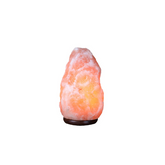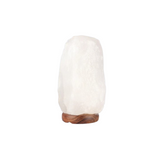Storing Edible Himalayan Salt: Best Practices for Freshness
Storing Edible Himalayan Salt: Best Practices for Freshness
Proper storage is essential for keeping your edible Himalayan salt clean, dry, and flavorful. While this natural seasoning is famous for its rich pink hue and trace minerals, it is also hygroscopic, meaning it absorbs moisture from the air. Without the right precautions, your salt can clump, fade, or lose its signature crunch.
This guide explains how to maximize the shelf life of Himalayan salt, what containers work best, and how to protect it from humidity, odors, and light.
Why Storage Matters for Himalayan Salt
Although Himalayan salt is a rock salt and doesn’t “expire” it can degrade if exposed to poor conditions.
- Moisture encourages clumping or dissolving.
- Sunlight can dull its pink color over time.
- Strong kitchen aromas (like coffee or spices) may transfer if the salt is left uncovered.
Tip: Store salt away from your stove or dishwasher, where steam and splashes are common.
Understanding Shelf Life
Unlike table salt, which often contains anti-caking agents, Himalayan salt is pure and unrefined. Its natural crystal structure helps it last indefinitely, provided it remains dry and uncontaminated.
| Storage Condition | Approximate Shelf Life |
|---|---|
| Airtight container, cool & dark | Indefinite |
| Open dish on countertop | May clump within weeks |
| Damp or warm area | Can harden or dissolve in days |
Choosing the Best Containers
Selecting the right containers is the cornerstone of good salt storage.
- Glass jars with tight-fitting lids: Preserve freshness and display the crystals attractively.
- Food-grade stainless steel tins: Block light and protect from air.
- Ceramic crocks with silicone seals: Excellent for large quantities.
- Avoid porous or plastic containers that may absorb moisture or odors.
As shown in the infographic below (suggested visual), airtight glass jars prevent humidity from affecting pink salt granules.
Keeping Salt Free from Moisture
Humidity is the biggest threat to the texture of Himalayan salt.
- Store in a cool, dry pantry.
- Keep away from direct airflow from dishwashers or ovens.
- Add a few uncooked grains of rice in the jar (optional) to absorb excess moisture.
If your salt clumps, gently break it apart with a clean utensil rather than crushing the crystals.
Protecting Against Contamination and Odors
Because salt attracts odors, avoid placing it near:
- Coffee or tea grounds
- Garlic or onions
- Harsh cleaning agents
For large quantities, divide your salt into smaller, sealed containers. Open only what you need for daily cooking to maintain purity.
Storing Different Forms of Himalayan Salt
Fine Salt
Fine-grain Himalayan salt is especially prone to moisture absorption. Use it quickly or store in a sealed spice jar with a shaker lid.
Salt Blocks and Slabs
Wrap cooking slabs in plastic or parchment after they’re completely dry. Place them in a cool cabinet, ensuring no water remains on the surface.
Coarse Crystals
Coarse pink salt is the most stable. Keep it in a jar with a desiccant packet for extended shelf life.
Tips for Long-Term Storage
- Label containers with the purchase date for tracking.
- Keep bulk supplies separate from frequently used kitchen stock.
- Avoid touching the salt directly with wet hands or spoons.
Troubleshooting Common Storage Problems
| Issue | Cause | Solution |
|---|---|---|
| Salt clumps | High humidity | Move to airtight container; add desiccant. |
| Faded color | Sunlight exposure | Store in opaque jar. |
| Off flavors | Stored near spices | Relocate to odor-free space. |
Related Uses and Recipes
Properly stored salt enhances more than just everyday seasoning. It’s perfect for making Himalayan salt brines, baking with pink salt, or adding a mineral twist to creative dishes.
For step-by-step recipes, explore our Top 30 Recipes Using Himalayan Pink Salt and other guides in our Himalayan salt recipes cluster.
Conclusion
Keeping edible Himalayan salt fresh is simple: keep it dry, protected, and stored in high-quality containers. By following these best practices, you’ll preserve its flavor, texture, and healthful minerals for years.
Apply these tips in your kitchen, and enjoy Himalayan salt at its peak quality every time you cook.





